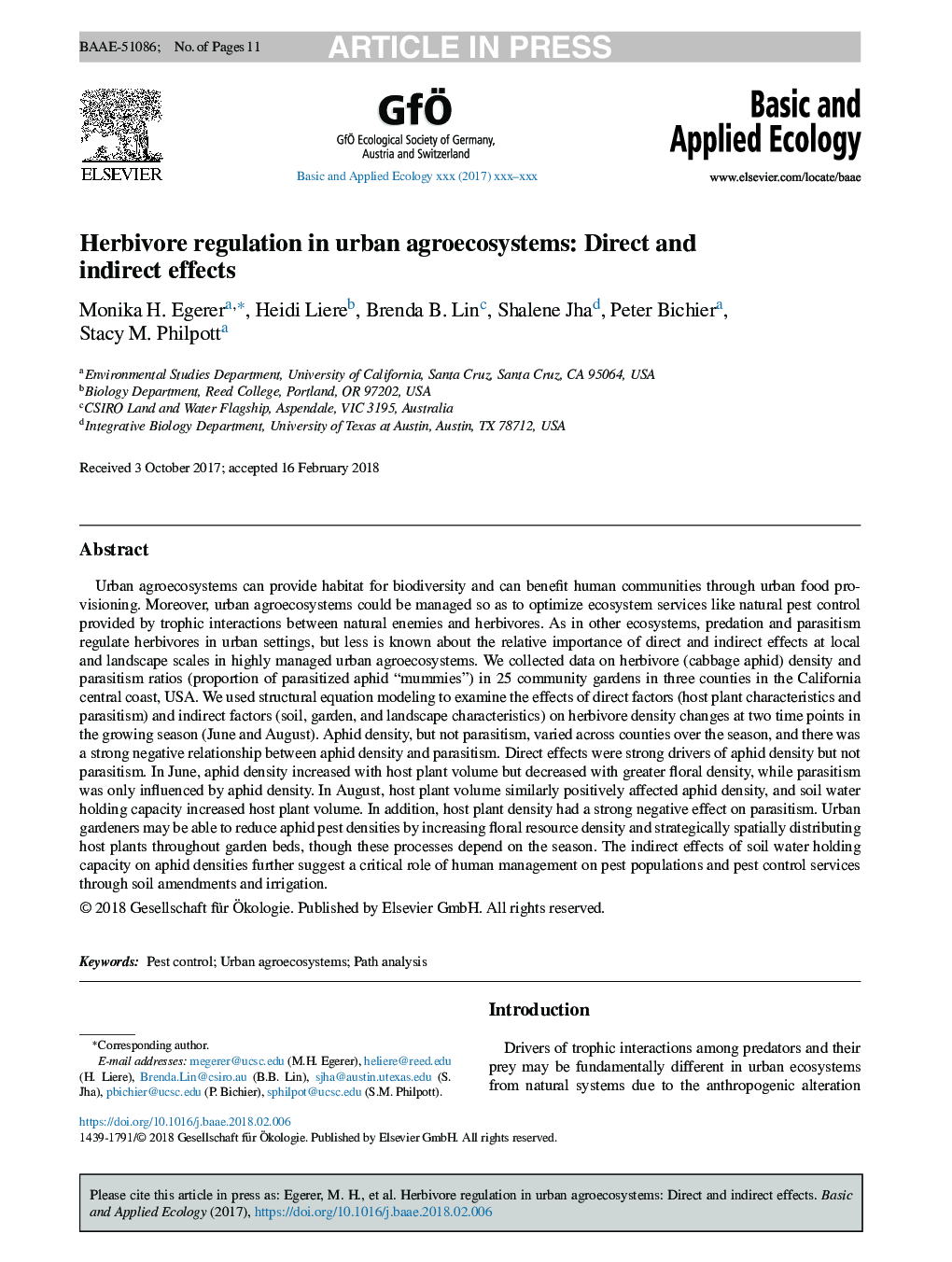| کد مقاله | کد نشریه | سال انتشار | مقاله انگلیسی | نسخه تمام متن |
|---|---|---|---|---|
| 8846996 | 1617852 | 2018 | 11 صفحه PDF | دانلود رایگان |
عنوان انگلیسی مقاله ISI
Herbivore regulation in urban agroecosystems: Direct and indirect effects
ترجمه فارسی عنوان
مقررات گیاهان دارویی در اراضی شهری: اثرات مستقیم و غیر مستقیم
دانلود مقاله + سفارش ترجمه
دانلود مقاله ISI انگلیسی
رایگان برای ایرانیان
موضوعات مرتبط
علوم زیستی و بیوفناوری
علوم کشاورزی و بیولوژیک
علوم دامی و جانورشناسی
چکیده انگلیسی
Urban agroecosystems can provide habitat for biodiversity and can benefit human communities through urban food provisioning. Moreover, urban agroecosystems could be managed so as to optimize ecosystem services like natural pest control provided by trophic interactions between natural enemies and herbivores. As in other ecosystems, predation and parasitism regulate herbivores in urban settings, but less is known about the relative importance of direct and indirect effects at local and landscape scales in highly managed urban agroecosystems. We collected data on herbivore (cabbage aphid) density and parasitism ratios (proportion of parasitized aphid “mummies”) in 25 community gardens in three counties in the California central coast, USA. We used structural equation modeling to examine the effects of direct factors (host plant characteristics and parasitism) and indirect factors (soil, garden, and landscape characteristics) on herbivore density changes at two time points in the growing season (June and August). Aphid density, but not parasitism, varied across counties over the season, and there was a strong negative relationship between aphid density and parasitism. Direct effects were strong drivers of aphid density but not parasitism. In June, aphid density increased with host plant volume but decreased with greater floral density, while parasitism was only influenced by aphid density. In August, host plant volume similarly positively affected aphid density, and soil water holding capacity increased host plant volume. In addition, host plant density had a strong negative effect on parasitism. Urban gardeners may be able to reduce aphid pest densities by increasing floral resource density and strategically spatially distributing host plants throughout garden beds, though these processes depend on the season. The indirect effects of soil water holding capacity on aphid densities further suggest a critical role of human management on pest populations and pest control services through soil amendments and irrigation.
ناشر
Database: Elsevier - ScienceDirect (ساینس دایرکت)
Journal: Basic and Applied Ecology - Volume 29, June 2018, Pages 44-54
Journal: Basic and Applied Ecology - Volume 29, June 2018, Pages 44-54
نویسندگان
Monika H. Egerer, Heidi Liere, Brenda B. Lin, Shalene Jha, Peter Bichier, Stacy M. Philpott,
